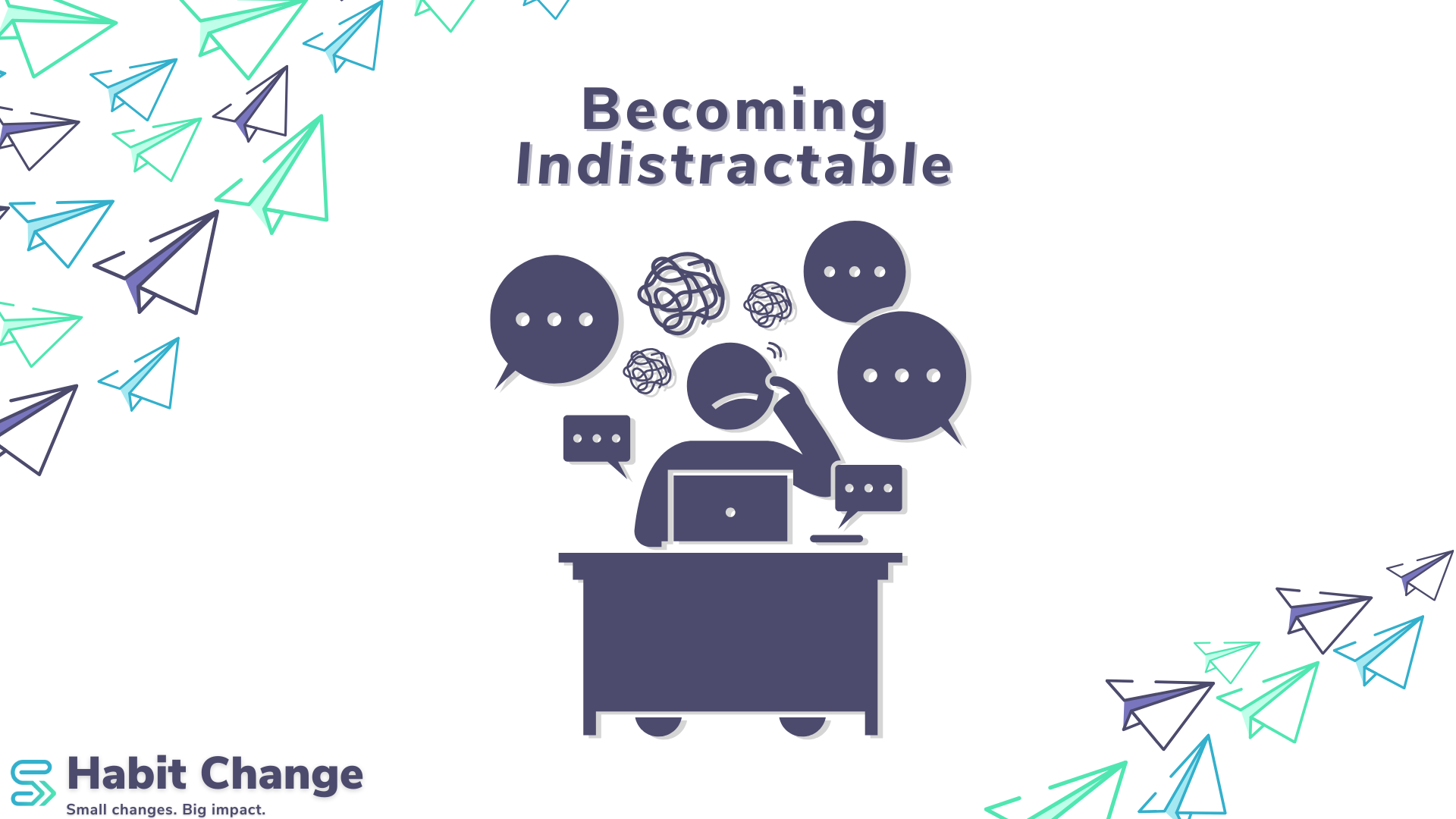Focus. Sometimes it seems like we are living in a world designed to ensure we are in a state of constant distraction.
The ability to concentrate on a specific task or activity is becoming an increasingly bigger challenge. The advent of digital devices and social media has cultivated a state of ‘continuous partial attention’.
What’s that?
Continuous partial attention is a modern adaptive behaviour of continuously dividing one’s attention amongst a number of competing things. The term, coined by tech consultant Linda Stone, is used to describe ‘the willingness to connect and stay connected, scanning and optimizing opportunities, activities and contacts in an effort to not miss anything that is going on’.
Continuous partial attention is not necessarily a dysfunctional behaviour. However, it can reduce your ability to focus and concentrate on the present moment, or efficiently complete a specific task.
In his book titled ‘Becoming Indistractable: How to Control Your Attention and Choose Your Life’, author Nir Eyal describes some key tips to help maintain your focus and concentration:
- Master internal triggers – these are triggers that come from within us. When we’re hungry, we are cued to get something to eat; when we feel a chill, we put on a sweater. We must identify, acknowledge and manage our internal triggers and what is causing them.
- Make time for traction – think of traction as the opposite of distraction. If distraction moves us away from accomplishing a goal or action, traction is the activities, tasks or thoughts that help us move closer to completing a goal. Extract time to specifically complete the tasks that help us progress toward our end goal.
- Hack back external triggers – these are the pings and dings on our phone, email notifications or anything that distracts us from our current task. Rather than completely ignoring these triggers, we must take a step back and consider whether an external trigger is helping or hindering us.
- Prevent distraction with pacts – going cold turkey and moving your phone to another room may be an even bigger distraction than just acknowledging a notification. However, by developing a ‘precommitment’—removing a future choice—in order to overcome distraction, you manage the possibility of engaging in distractions while attempting to accomplish a task.
While distractions will continue to remain a reality of our modern existence, our response to them is most certainly within the locus of our control.

